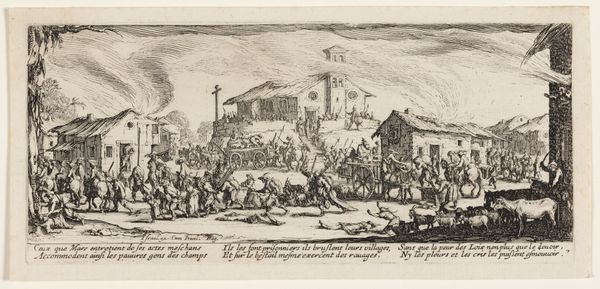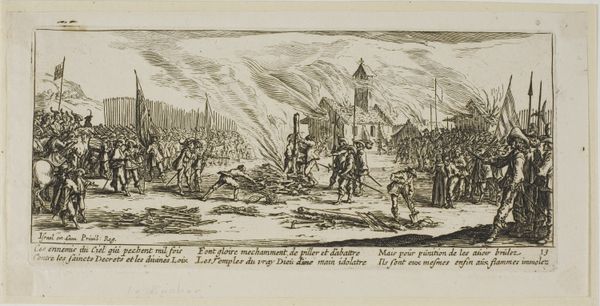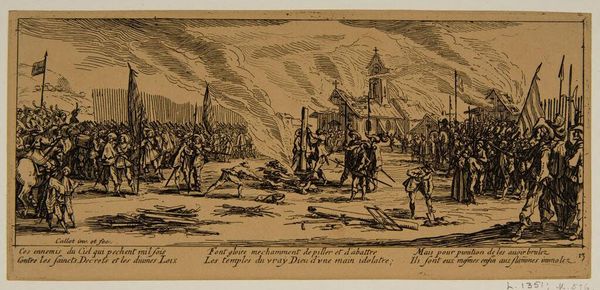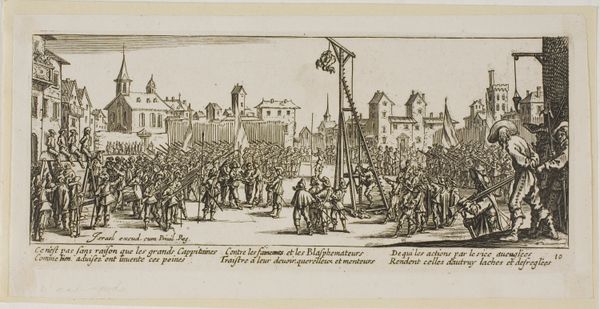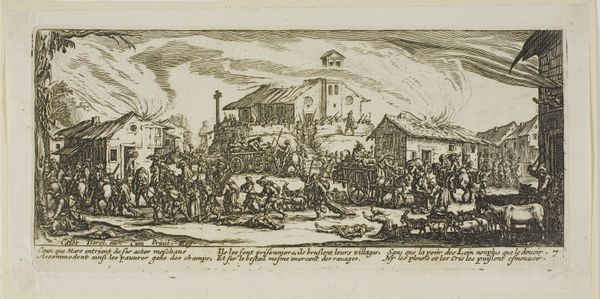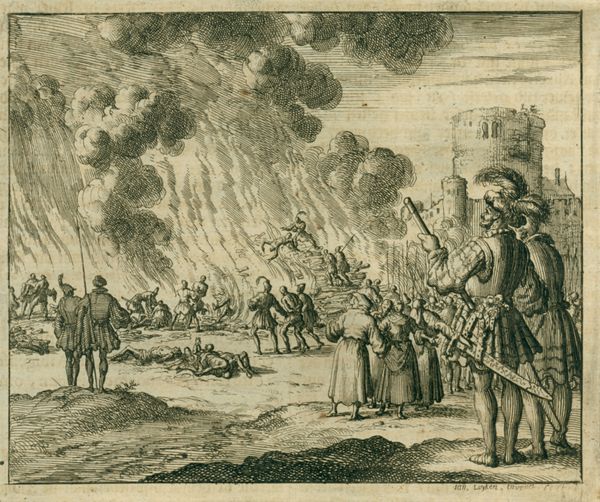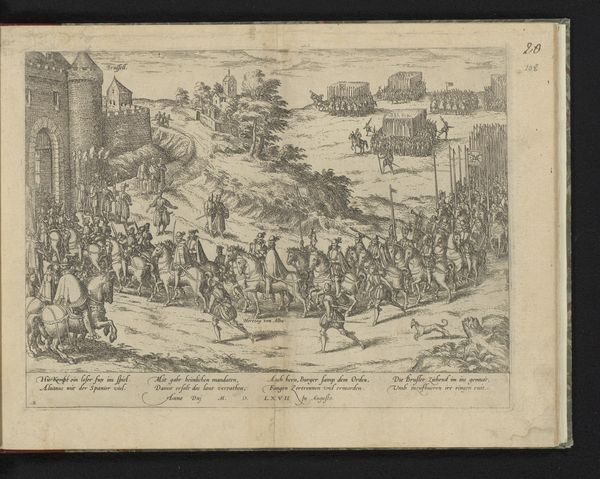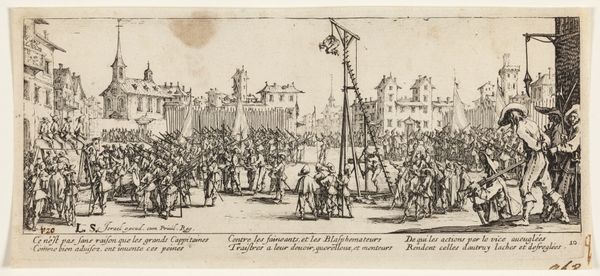
print, engraving
#
baroque
# print
#
history-painting
#
engraving
Dimensions: 83 mm (height) x 188 mm (width) (plademaal)
Editor: Here we have Jacques Callot's "Afstraffelse ved brænding," from 1633, a print – an engraving to be precise – depicting a rather grim historical scene. There’s a church burning, figures being executed, and a whole crowd witnessing the event. It feels very distant and detailed. How do you interpret this work? Curator: Well, looking at this from a materialist perspective, I’m immediately drawn to the printmaking process itself. Callot’s skill in engraving allowed him to create multiple copies, distributing this scene of punishment far and wide. Consider the social implications of such dissemination: What kind of audience was this intended for? What was the impact of mass-producing imagery depicting power structures enforcing their rule? Editor: That's fascinating. I hadn't considered the printmaking aspect as a means of disseminating a political message. Were prints like this common forms of propaganda? Curator: Absolutely. Engravings became powerful tools for shaping public opinion. Callot's technical skill also speaks to the broader material culture. Copper plates were valuable; who commissioned this work and funded the production? It forces us to acknowledge how material conditions and economic forces shape artistic output. What do you make of the fire depicted, beyond the literal act of burning? Editor: I guess, symbolically, fire suggests purification or destruction, a forceful erasure of something deemed undesirable by the authorities. I see that the print not only shows a scene, but is also part of that social, and economical context that can tell us a lot about it! Curator: Exactly! This print becomes more than just an image; it's a record of labor, materiality, and ideological dissemination during a tumultuous period.
Comments
No comments
Be the first to comment and join the conversation on the ultimate creative platform.
